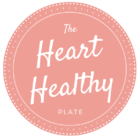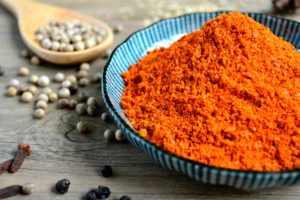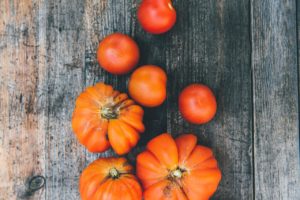

By Samantha Chabior, RD
DISCLAIMER: Links included in this post might be affiliate links. If you make a purchase with the links provided, Heart Healthy Plate may receive a small commission at no additional charge to you. You should always perform due diligence before buying goods or services, and speak with your healthcare provider if you’re unsure if a product is right for you. Read more about how we use affiliate links here.
What you keep in your pantry can either make or break your diet. If you’re just starting out on your heart healthy eating journey, it can feel overwhelming to know which foods to keep stocked in your pantry to make delicious and nutritious meals.
This Ultimate Heart Healthy Kitchen Guide will help you stock your kitchen with staples to make healthy meals to manage cholesterol, blood pressure, and blood sugar levels in a stress free way. It’ll ensure you always have nutritious foods to make a variety of meals that are delicious and good for your heart. This guide is based off of the Mediterranean Diet, which has been shown to be one of the best diets for reducing your risk of having a heart attack or stroke. The ultimate goal of a heart healthy diet is to include antioxidant rich, nutrient dense foods and limit nutrient-poor, processed foods that add little nutritional value and may contribute to heart disease.
How to use this guide
The best way to use this guide is to bookmark this page or email the link to yourself so you can refer to it anytime you need to in the future. There’s a lot of content, and it might be better to spend a few days reviewing each section. There are helpful links to related blogposts, recipes and products that I think will help people in any stage of their heart healthy eating journey. If you’re a beginner and new to heart healthy eating, try to to focus only on one section of this article (I recommend starting with Pantry Items), so that you don’t get overwhelmed.
I also recommend you download the FREE heart healthy meal planner and grocery list to help you plan out your meals for the week and shop for heart healthy kitchen essentials. This is the simplest way to take this guide with you to the grocery store, which is where you need it the most!
Feel free to jump to the section you want. In this guide we’ll cover:
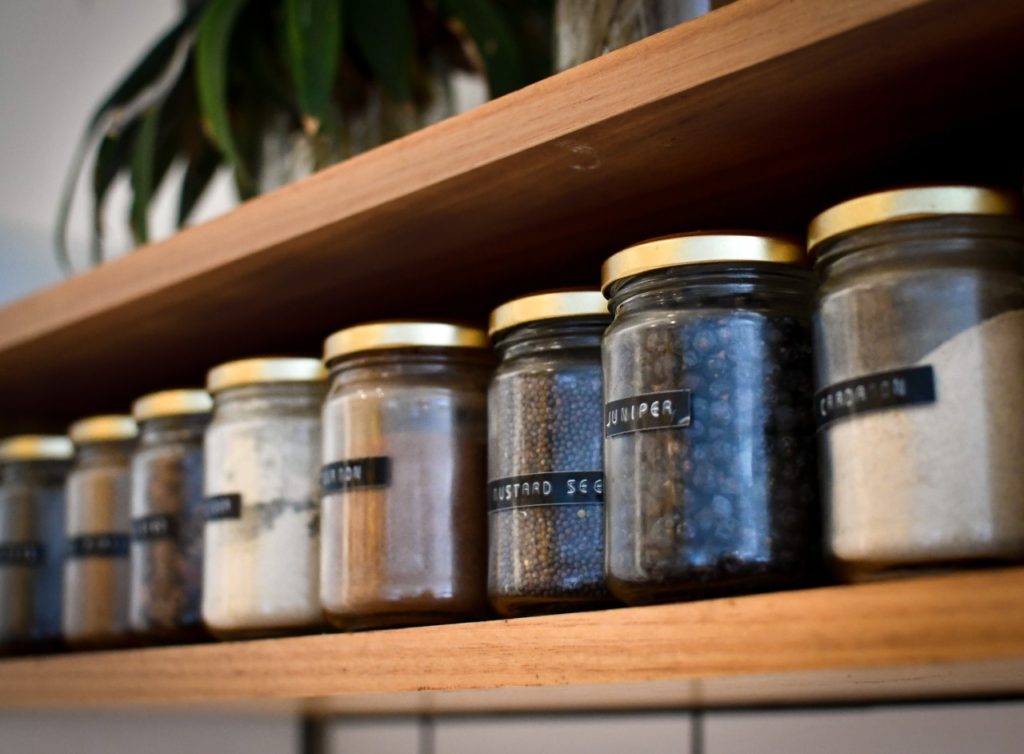
Pantry Items
Not sure if you can commit to using up foods before they go bad? Start with these staple pantry items. They last a long time (sometimes years!), so if you’re not quite sure how often you can commit to making more meals at home or you’re just starting out, then choose just one or two of these pantry items to keep in your kitchen. Sometimes if we try to change everything at once it can feel very overwhelming, so start slowly and gradually build up your heart healthy kitchen!
Plus, by stocking your pantry with heart healthy foods you’ll be more likely to grab something that’s nutritious as a snack, which can help with managing weight and food cravings.
Try these snack ideas:
Grains
Many fad diets completely eliminate grains because they contain carbohydrates (“carbs”), which many people associate with weight gain. This is very unfortunate because studies show that including whole grains can actually help lower your risk of cardiovascular disease. Whole grains are rich in both insoluble and soluble fibre, so they help with digestive health and help regulate blood sugars and cholesterol. Rather than eliminating carbs, I encourage my clients to be mindful with the portion sizes and the types of grains they choose.
Whole grains are a key part of meals that help with satiety, which means you stay feeling fuller for longer and this may actually help with weight loss. They are also rich in vitamins and minerals such as B vitamins, antioxidants and plant based omega-3 fats. When choosing processed whole grain products such as breads, pastas, and crackers make sure that you check the sodium content as these can add a significant amount of sodium to the diet if you’re not careful.
Grocery list: barley, farro, quinoa, whole wheat pasta or legume-based pasta, brown rice, wild rice, whole grain breads with 4 grams of fibre or more per slice (whole wheat, rye, pumpernickel), whole grain whole wheat pita, low sodium whole grain crackers
Cereals
One of the best ways to start your day is with a high fibre cereal. Steel cut or large flake oats and psyllium cereals are loaded with soluble fibre, and also fuel our good gut bacteria. Pair your favourite cereal with some fruit for a perfectly balanced heart healthy meal. Avoid high sugar cereals that don’t give you much nutrition, will cause a spike in your blood sugar levels and will leave you feeling hungry shortly after eating.
Grocery List: steel cut oats, bran cereals with psyllium, low sugar muesli
Legumes
Legumes are an excellent source of plant based protein, soluble fibre, and are rich in potassium which is a key nutrient for blood pressure lowering that many people don’t get enough of in their diet. The Mediterranean Diet encourages at least three servings of legumes per week. A serving is about ¾ cup of cooked legumes. Legumes are so incredibly versatile, and can be eaten in salads, soups, stews, chilis, and even added to pasta sauces. If you’re new to legumes, you don’t need to go completely vegan and eliminate all animal foods to get the benefits of eating more plant proteins. You can start incorporating them by doubling the beans in a chilli in place of half the ground beef, or mix them into your rice for an added boost of fibre.
Canned no salt added legumes are a great choice if you’re short on time or forgot to soak your dried legumes overnight. Since they’re preserved with calcium instead of salt you don’t have to worry about the high amounts of sodium found in regular canned legumes.
Grocery List: dried or no salt added canned beans (black beans, kidney beans, pinto beans, white beans etc.), chickpeas, lentils
Try these easy legume recipes:
Nuts, Seeds, and Nut Butters
Incorporating a small handful of nuts each day has been shown to help with lowering cholesterol levels. Try to get a variety of different nuts to reap their respective nutritional benefits. Walnuts are rich in anti-inflammatory omega-3 fats, pumpkin seeds are rich in magnesium which is important for blood pressure lowering, and almonds are packed with vitamin E which is a powerful antioxidant.
Grocery List: unsalted raw or dry roasted (without oil) almonds, walnuts, pecans, hazelnuts, sunflower seeds, pumpkin seeds, chia seeds, ground flaxseeds, hemp seeds, natural almond butter, natural peanut butter
Sauces & Bases
Sofrito sauce is a sauce that combines olive oil, garlic, and tomatoes to add flavour to meals, and is a key part of the heart healthy Mediterranean Diet. Studies show that this combination of ingredients is loaded with powerful antioxidants that can help protect your heart. Sofrito sauce can be used as the base for soups, curries, stews, chilis, and of course pasta sauces. But to keep the sodium low, I encourage using no salt added products.
If you love to flavour your stir-frys or other meals with soy sauce, a great lower sodium alternative is Coconut aminos. It has a fraction of the sodium compared to soy sauce, with all the same delicious flavour. I also encourage stocking up on no salt added broth to add a boost of flavour to meals, while allowing you to control the sodium content.
Grocery List: No salt added tomato paste, diced tomatoes, crushed tomatoes, coconut aminos (a low sodium soy sauce alternative), no salt added broth
Flours
If you’re going to do any baking then whole wheat flour is an absolute must-have item for your pantry. Not used to the taste yet? Try mixing 50% white flour with 50% whole wheat flour to help boost the fibre content. Whole wheat flour is great for making bread, muffins, pizza doughs and is a healthier alternative when used in other baked goods because it retains more of the nutrients than the refined white flour.
Grocery List: Whole grain whole wheat, rye, spelt
Oils
Research shows that a Mediterranean style diet, which is rich in heart healthy unsaturated fats from extra virgin olive oil can help lower your risk of having a heart attack or stroke. Using healthy oils like olive, canola, and avocado oil instead of high saturated fats like butter or coconut oil is recommended to help manage cholesterol levels. Many people are concerned about using olive oil as a cooking oil, but it actually has a fairly high smoke point which means it can safely be heated to about 350 degrees F. It’s also a great oil to use as a base for homemade salad dressings.
Grocery List: extra virgin olive oil, canola oil (expeller pressed if you can find it), avocado oil
Spices & Herbs
It’s easy to feel overwhelmed with all of the spices and herbs available. But I find if you stock your pantry with these twelve key staples you can make 80% or more of the recipes you find on the internet and this website! Combining them together in different ways will give you countless flavour options. Spices are an upfront investment, but once you purchase these twelve key ones you’ll be set to go! Many spice racks already come stocked with these staples. Using interesting spices and herbs will give you a big boost in flavour without relying on salt. Many spices, such as turmeric, are rich in antioxidants that help fight inflammation that contributes to heart disease.
Grocery List: black pepper, oregano, thyme, rosemary, garlic powder, onion powder, cumin, curry, turmeric, cinnamon, paprika, chili powder, crushed red pepper flakes
Aromatics
Another great way to add flavour without salt is using aromatics. These are best when sautéed in some olive oil at the start of the recipe, as this really helps release the flavour. Many of them also taste great raw when minced into salads, toppings and dressings.
Grocery List: garlic, onions, ginger are three of the most often used aromatics. They also have unique heart health properties as they are rich in antioxidants.
Try these salt-free seasoning ideas:
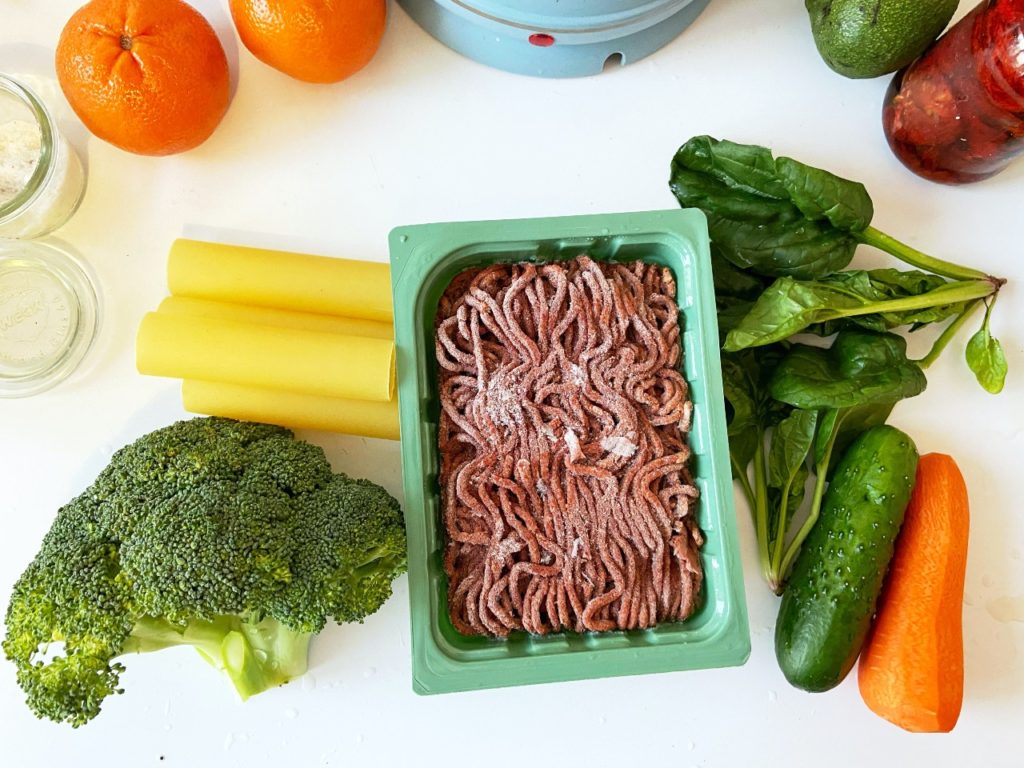
Freezer Items
The freezer isn’t just for processed convenience foods and ice cream! It can be filled with heart healthy lean proteins, produce, and even entire meals.
Vegetables & Fruits
Did you know that frozen produce is just as nutritious as fresh? Fruits and veggies are flash frozen right after they are picked to ensure they lock in the freshness and nutrients. I love to keep frozen mixed vegetables in the freezer for stir-frys, soups, and to mix into rice or casseroles. While frozen fruit is excellent in smoothies, tossed into morning yogurt or a bowl of warm oatmeal.
Grocery List: frozen mixed vegetables, frozen fruit
Leftovers
Cook larger portions of homemade chilis, stews, soups, curries or other main dishes and freeze extras for later. This is a great way to make sure you always have a homemade meal, even when you’re strapped for time or just don’t feel like cooking. Most foods with liquids (sauces, broths etc) freeze very well. You can easily thaw the container overnight in the fridge for use the next day, or defrost in a pot on the stovetop or in the microwave for a convenient busy weeknight meal.
Checkout these articles for helpful freezer-friendly ideas:
- How To Freeze Leftover Tomato Paste The Right Way (can be used for any leftover sauces!)
- 10 Lazy Ways To Make Healthy Meals Using Pre-Made, Frozen & Canned Foods
Proteins
I always encourage stocking up on lean proteins when they are on sale and keeping whatever you can’t use immediately in the freezer. Buy a large batch of skinless chicken breasts, ground turkey or chicken, salmon, or tofu and toss the entire package straight into the freezer. Alternatively you can portion out the amounts you would normally use for one meal into individual freezer safe, sealable plastic bags for convenient use later. It makes it much easier to take out only 2-3 individually packaged chicken breasts, rather than battling to break apart an entire package of frozen chicken breasts to only take a few out. You can also buy frozen unseasoned chicken breasts without any batter or breading, which tends to be a better price point than fresh.
For frozen seafood try to stay away from breaded or battered fish as they are higher in sodium and saturated fats. Instead, I recommend choosing unseasoned fresh fillets that have been frozen from a reputable seafood company. Unseasoned white fish fillets like basa, tilapia and cod and salmon are usually individually frozen in a large package making it easy to take out exactly what you need for cooking. Frozen seafood also tends to be much cheaper than fresh, making it a cost-effective option for getting more seafood into your diet! Seafood like shrimp, mussels and scallops are also great to keep in your freezer for quick weeknight meals as they don’t take very long to cook and quickly defrost in the sink under running water for a last minute meal.
Grocery List: frozen unseasoned with no batter or breading salmon, trout, cod, basa, halibut, tilapia, shrimp, scallops, chicken breasts
Staple Foods
Did you know you can freeze milk and bread? In our house, we never go through these fast enough before they start to spoil, so we often throw them in the freezer to extend their shelf life. When you want to use the milk simply take it out of the freezer and place in the fridge overnight, or on the countertop for a few hours. For bread, either leave the entire loaf out on the countertop overnight or take one or two slices out at a time and pop in the toaster for immediate use!
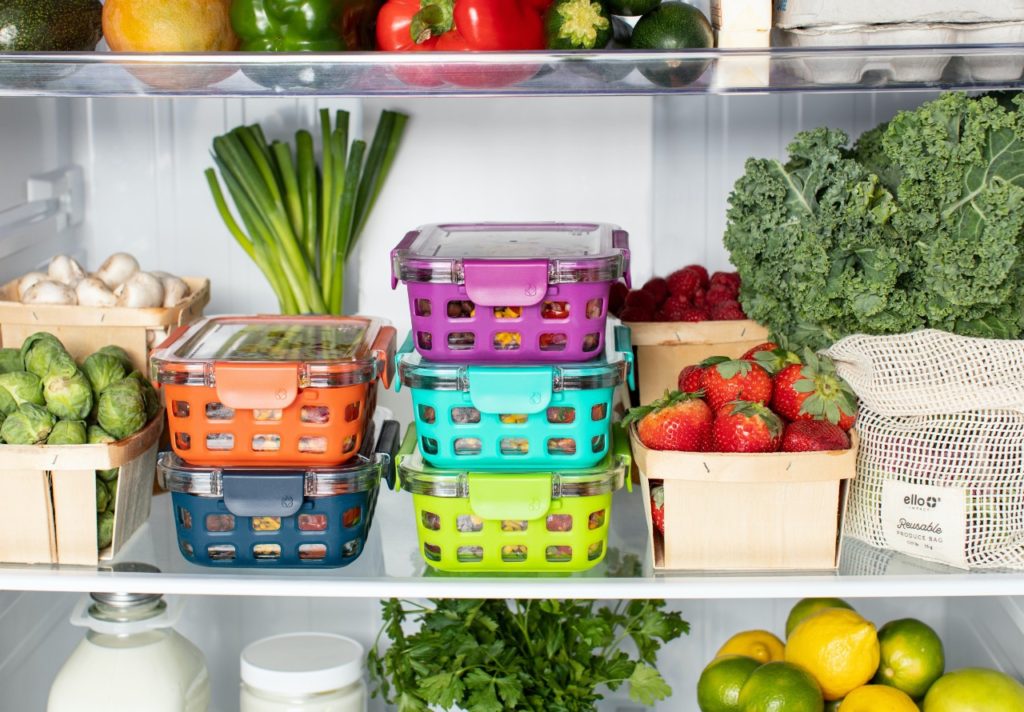
Fridge & Countertop Items
Fresh foods spoil the fastest, so I always encourage making a meal plan for the week to use up ingredients before they expire.
Download your copy of the FREE heart healthy meal planner and grocery list.
Fresh vegetables & fruits
The Mediterranean Diet encourages at least four servings of vegetables per day and three servings of fruit per day. Make a list of your favourite veggies and fruits and be sure to add them to your weekly grocery list. Be sure to include at least one dark leafy green vegetable and one orange or brightly coloured vegetable with your lunch and dinner meals. Fruits are perfect for snacks, desserts, as toppings for yogurt and cereals, and in smoothies.
Grocery List: dark green leafy vegetables (like kale, spinach, collard greens, bok choy, broccoli), dark orange vegetables (like carrots, orange peppers), a variety of brightly coloured vegetables (like egg plant, zucchini, tomatoes, snap peas). A variety of fruits like berries, apples, oranges, pears, clementines. When it comes to veggies and fruits go with whatever you like and are most likely to eat!
Dairy & Dairy Alternatives
Diets that include 2-3 servings per day of calcium-rich low fat dairy/dairy alternative products have been shown to help lower blood pressure, plus they are excellent sources of vitamin D, calcium, and protein for our bones and muscles. Try to choose 0% fat unsweetened yogurts to keep the saturated fats low and avoid the added sugars. Flavoured yogurts contain high amounts of sugar, so it’s best to avoid these products. But if you just can’t stand the taste of plain yogurt then try mixing 50% sweetened/ flavoured yogurt with 50% plain unsweetened yogurt to slowly get used to the taste. Or mix in some thawed, frozen fruit for a natural kick of sweetness. A dash of cinnamon also greatly helps cut the bitterness of plain yogurt!
Grocery List:
Dairy: 0% fat unsweetened yogurt, 0% cottage cheese, skim/partly-skim milk, less than 18% Milk Fat reduced fat cheese
Non-Dairy Alternatives: unsweetened soy milk, almond milk, or oat milk that are fortified with calcium and vitamin D
Proteins
The Mediterranean Diet encourages choosing poultry like chicken and turkey more often than red meats like pork, beef, and lamb. When you do choose red meats, choose the leanest cuts possible (extra lean cuts have less than 2 grams saturated fat per 3 oz serving).
Limiting red meats and choosing lean proteins will help limit saturated fat in the diet, which helps keep cholesterol levels in check. The Mediterranean Diet also encourages fish and seafood 2-3 times per week, which can be great sources of heart healthy omega-3 fats which may lower inflammation in the body. Try to include at least one meatless meal per week, and incorporate plant proteins often to boost your fibre intake.
Try to avoid processed meats like deli meats, ham, bacon, sausages, hamburgers which are high in saturated fat and sodium and should be limited.
Grocery List:
Poultry: Fresh skinless chicken breast or turkey breast, extra lean ground turkey, extra lean ground chicken
Red meat: Extra lean cuts of beef (eye of round roast and steak, sirloin tip side steak, top round roast and steak, bottom round roast and steak, top sirloin steak), extra lean cuts of pork (pork tenderloin, pork boneless top loin chop, pork sirloin roast)
Fish & Seafood: Lean white fish (halibut, haddock, cod, tilapia, basa), fatty fish rich in omega-3 fats (salmon, mackerel, herring, sardines, tuna), seafood (shrimp, mussels, clams, scallops)
Plant Proteins: Tofu, tempeh, edamame soy beans, lentils, beans, chickpeas
Try these recipes:

